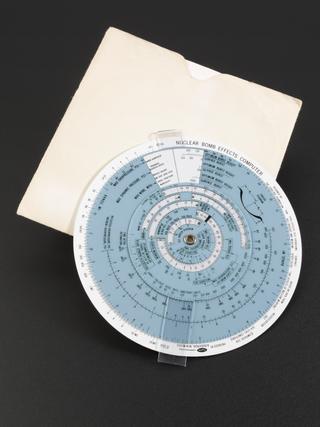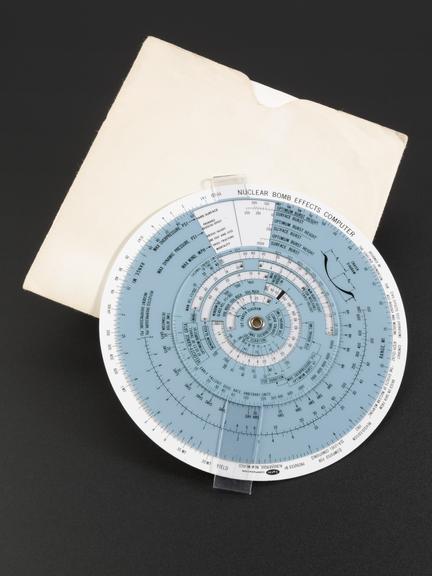
Circular slide rule to calculate nuclear bomb effects
1962


Circular slide rule to calculate nuclear bomb effects, designed by Lovelace Corporation using data from book "The Effects of Nuclear Weapons" (1962 edition) and made by Lytle Corporation, Albuquerque, New Mexico, plastic in paper envelope with instructions
The circular slide rule uses data from the historic 1962 report prepared by the United States Department of Defense, during a critical period for the nuclear arms race. The instrument was intended to give best available approximations for protective planning. From the initial blast parameters the user can find duration and arrival time of a blast, and the ‘translational velocity’ of a man and of window glass. The back of the instrument gives scales for radiation and fallout dose.

